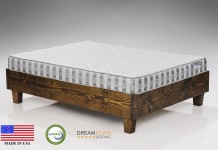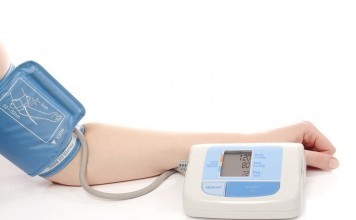Our skin is sensitive, which is why it’s prone to various infections. While most skin problems affect our face as the most exposed part of our body, other areas can develop some skin problems and infections as well. For example, our legs can also be prone to skin infections. In this article, we’re going to discuss skin infection that affect one’s legs.
Cellulitis
Cellulitis is a very common and potentially dangerous skin infection that usually affects lower legs, but can also affect other parts as well. This skin infection can either affect skin’s surface or tissues underneath it. It’s important to bear in mind that cellulitis isn’t transmitted from person to person. However, if the skin infection is left untreated it can develop serious consequences, which is why it’s recommended to see a health care provider as soon as you notice first symptoms.
Cellulitis symptoms usually include:
- Red patch on the skin
- Skin dimpling
- Swelling and tenderness
- Red spots and blisters
- Fever
- Warmth
- Signs and Symptoms of Wrinkles
Due to the fact the infection has the ability to spread rapidly, it’s important to identify it and see help immediately. You should seek emergency care when you experience the following symptoms:
- Red, swollen, tender rash on your leg(s) or a rash which spreads rapidly. In cases of cellulitis, rash is accompanied by fever.
But what causes this skin infection? Cellulitis is caused by bacteria, usually staphylococcus and streptococcus, enter your body thorough skin cracks or wounds. Although the infection can occur anywhere in your body, it usually affects your legs. Bacteria enter your body via ulcers, athlete’s foot, dermatitis, puncture wounds, cuts etc. What most people don’t know is that bacteria can also enter the body through dry, swollen, and flaky skin. Furthermore, some insect bites can also transfer this bacteria and spread infection.
Treatment for this infection includes antibiotics, rest, and elevating your leg to speed up recovery. If the infection recurs, your doctor might suggest preventive antibiotics. However, to prevent this and other infections you should follow these tips:
- Wash your wound regularly using gentle soap
- Apply ointment or protective cream on wounds, cuts etc.
- Use bandage to cover the wound
- Use moisturizer to keep your legs, and other body parts, nourished, smooth, and hydrated
- Inspect your feet daily
- Trim your toenails regularly and carefully
- Promptly treat rashes or other skin infections
- Consult a dermatologist if you notice anything extraordinary.
Folliculitis
Folliculitis is, also, a common skin infection which is indicated by inflamed hair follicles. In most cases, it’s caused by bacterial or fungal infection. If left untreated, the infection can turn into sores that are difficult to heal. Although the infection itself isn’t life-threatening, it can become very each and frustrate the affected person.
The infection can affect any part of your body with hair follicles; which means that only your lips, palms, soles, and mucus membranes can’t develop folliculitis. Folliculitis causes include viruses, bacteria, fungi, and inflammation from ingrown hairs.
You are more likely to develop folliculitis if you:
- Have a medical condition which reduces resistance to infections e.g. diabetes, HIV/AIDS
- Wear clothing which traps the heat and sweat e.g. high boots
- Shave
- Soak legs, and other body parts, in a hot tub that isn’t maintained well
- Are overweight
- Suffered damage to your skin etc.
Folliculitis is indicated by the following symptoms:
- Large and swollen bump or mass
- Tenderness, itchiness, pain
- Red, inflamed skin
- Pus-filled blisters
- Small red bumps and white-headed pimples around hair follicles.
Treatment for this infection includes creams or ointments that fight infections. Surgery is recommended only when other types of treatment prove to be unsuccessful. At home, you can help relieve infection by:
- Protecting the skin
- Shaving properly
- Applying soaking lotions
- Cleaning the affected skin
- Wearing breathable clothes and comfortable shoes or boots that don’t trap the heat.
Tinea corporis
Tinea corporis is also known as the ringworm, although there’s no actual worm involved in the infection. It is a fungal infection which affects the outermost layer of the skin and is characterized by:
- Flat, scaly patch of the skin
- Redness and itchiness
- Flat area becomes a circular ring after some time.
Unlike first two skin infections that affect legs, tinea corporis is contagious and spreads in the following ways:
- Animal to human
- Human to human
- Soil to human
- Object to human.
The infection is treated by over-the-counter anti-fungal creams and ointments. Ringworm can be difficult to prevent, but not impossible. You can reduce the risk of getting this infection on your legs, and other parts of your body, by:
- Educating yourself and others about ringworm
- Avoiding to share your clothes, shoes, towels, and even sheets with other people
- Avoiding infected animals
- Staying cool and dry at all times
- Keeping clean by washing your legs, hands etc. regularly.
Conclusion
Your legs can be exposed to infections just as other parts of your body. Furthermore, since your legs are subjected to cuts, wounds, ulcers, and other types of damage it is easier for bacteria to enter the body there and cause unwanted consequences. Always inspect skin of your legs, moisturize regularly, and consult your dermatologist as soon as you notice something “weird”. The best way to tackle these infections is to spot them and treat them in early stages.
References
- https://www.thebeautyinsiders.com/skin-brighteners
- https://www.mayoclinic.org/diseases-conditions/cellulitis/basics/definition/con-20023471
- https://www.dermnetnz.org/site-age-specific/lower-leg.html
Author Bio
Kelly Everson (@kellyeverson12) is an American author and MA in English literature. She is a health article writer who has written numerous articles/online journals on stretch marks, pregnancy, sleep disorders, female health and joint pain problems. She is also passionate about health, beauty and fitness. She is contributing to Consumer Health Digest from 2011. Examiner from 2013, Epochtimes & Healthline from 2014







































